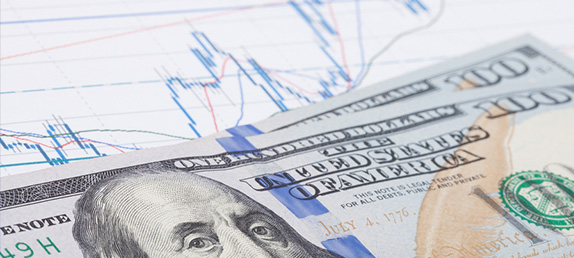
To understand what the Dollar Index means to the U.S. dollar, it helps to know what the Index includes and tracks. The Index isn’t just a market measurement of dollar valuation over time. In fact, the Index tracks how the Dollar plays against select currencies including those from England, Canada, Switzerland, the Euro, and Sweden. Depending on the direction of the index measurement, the Dollar then shows a movement towards strength versus these currencies or weakness. That in turn can influence perceptions in trade and related economies.
When a government starts flooding more currency into monetary markets generally that tends to weaken the currency. It’s a matter of supply and demand in some respects. Where more units of currency are printed and made available backed up by the same monetary asset, the units themselves become worth less. So where the currency released, for example, represented 1 unit for 1/100 of the asset’s value, if the currency population is then doubled, that same unit now represents half the original value. In essence the same unit of currency over time loses buying power.
Quantitative easing represents a form of government currency-flooding. The government buys up more liabilities in exchange for new currency. That puts more Dollars into the monetary markets, freeing up liquidity. The same activity also places pressure on foreign currencies when they are not doing the same thing. Suddenly, the Dollar gets cheaper versus other countries to increase economic activity and export from the U.S. Other countries then see their currencies get stronger and their exports weaker in return.
Additionally, as more Dollar currency flows, people start buying more in the immediacy, taking advantage of the extra available currency units before inflation and the rest of the market catches up to the change. This in turn boosts speculation, which also begins to drive up prices, particularly in commodities.
However, you might ask, what’s wrong with a weaker dollar if it jump starts the economy? Long-term there is a price that has to be paid. If the Dollar is artificially lowered, economies have a habit for forcing lower prices until something new forces an upturn. That creates a vicious price war in purchasing and import-export. If other countries match by lowering their currencies, arguably the Dollar Index begins to fall and it becomes a tit-for-tat game between different country monetary policies. This ends up eliminating any profit for businesses that fuel economies. Eventually, they can’t compete and close down, reducing the labor pool, consumer spending, and ultimately government tax revenues.
A Dollar Index crash or sharp downward trend plus continued monetary moves like quantitative easing all show short-term thinking that doesn’t address the real problem in current economies. Unlike the boom generation nobody is producing anything that creates real growth or jobs anymore. Until that happens, the U.S. Dollar and its economy will continue to flounder, playing money games rather than making money the old fashioned way, earning it.
Source: CNBC

